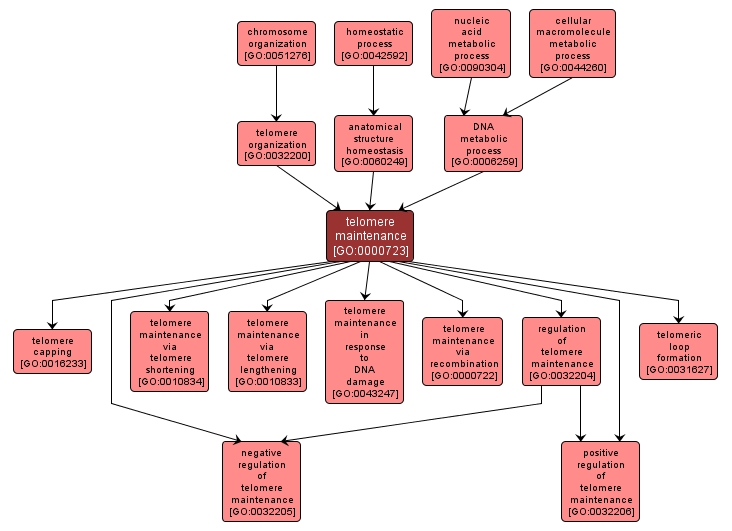GO TERM SUMMARY
|
| Name: |
telomere maintenance |
| Acc: |
GO:0000723 |
| Aspect: |
Biological Process |
| Desc: |
Any process that contributes to the maintenance of proper telomeric length and structure by affecting and monitoring the activity of telomeric proteins and the length of telomeric DNA. These processes includes those that shorten and lengthen the telomeric DNA sequences. |
Synonyms:
- regulation of telomere length
|
|

|
INTERACTIVE GO GRAPH
|














